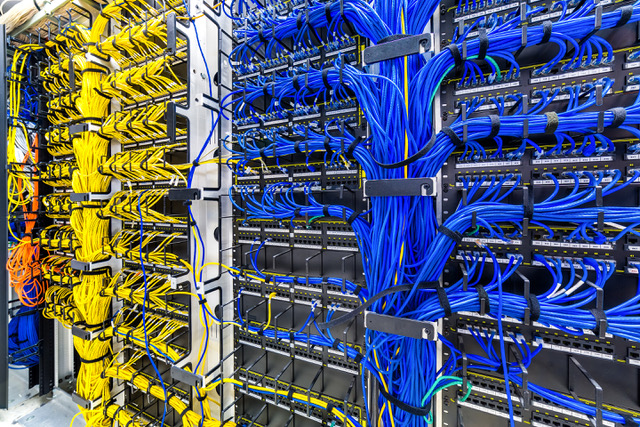Keeping your cool
The adoption of smart city strategies, while still evolving and at various stages of implementation worldwide, is in part about developing a data-driven, enhanced, modern infrastructure to improve the quality of living for the city’s residents and visitors through technology. Research conducted in 2017 ranked Smart Cities as one of the world’s seven most critical industries in terms of IT infrastructure.
The tasks undertaken by smart city applications can be as simple as monitoring and controlling energy use in municipal buildings and street lighting. On the other hand, they can be as complex as managing emergency services and having the ability to re-route traffic around road hazards or accidents via highway message boards, providing early warning systems to local citizens for a fast-moving weather event, or providing surveillance via CCTV-equipped smart light poles.
As cities gravitate toward smart services – potentially one smart service at a time – they likely will leverage their current infrastructure, partnering with their operator network. But as services are added and as 5G advanced wireless services come to the fore, cities may choose to add racks and servers to existing small or medium-sized municipal building spaces. This can help reduce latency and in effect create an edge data center. These edge facilities, while still supported by a larger host, provide speed to the overall system of Internet of things devices, or nodes, such as smart light poles or highway message boards.
Thermal management is key to healthy IT
Maintaining the additional IT load within the small rack and server rooms is crucial to minimize system downtime, which means cooling is mission critical. Similarly, in node applications such as smart light poles with CCTV camera capabilities, the thermal issue is twofold; keeping the IT equipment housed in the IT enclosure cool and protected from the elements.
It may be tempting to use the existing building air conditioning for the small IT closet or server room. That’s usually not a good idea as building AC typically lacks the reliability, capacity and precision needed to manage heat for IT equipment racks, and you will likely pay for that decision in the long run. Instead, plan on dedicated precision cooling.
The primary factors that drive the selection are the expected IT load and room size. In general, the cooling system will work harder if there is a small load in a large room; in those cases, an integrated enclosure system – available in rack and row options – may be the best cooling option.
In an open room approach, more load and floor space are considerations, and there are multiple cooling solutions to do the job. Remember, the system that will deliver the best combination of performance, reliability and efficiency depends on the space, load, available building systems, mounting preferences, future expansion plans (i.e., scalability), your city or region’s sustainability tenets and geography.
Cooling options for small systems include mini-split systems, ceiling-mount precision systems, wall- or floor-mounted split systems, perimeter systems, rear-door heat exchangers or rack cooling systems. As IT systems potentially expand and become more sophisticated, racks and servers will be added and the space itself may change based upon this. At this point, a choice may need to be made between water-based or refrigerant-based cooling. This again depends on several factors, but two to consider early on in this decision are your city’s access to a fresh water supply and the cost of that water. Water-based cooling may be more applicable in the Great Lakes or coastal regions as opposed to the southwest.
Thermal management at the node or roadside level begins with louvered vents in the enclosure that houses the IT equipment, but it will likely need additional temperature-activated fan-based cooling units and/or small heaters.
Remote monitoring and servicing is the next consideration. Fortunately, much of today’s thermal management equipment may be monitored remotely, either from a computer in a municipal office or laptops and/or apps that allow smart devices to be accessed from virtually anywhere. This makes analyzing service needs and planning a maintenance schedule easier and can significantly enhance system reliability and uptime.
Working with a thermal expert to chart the Smart City journey
Once a smart city journey begins, it will likely expand and embrace more smart services as time goes on – and that is a good thing, because it means the city is building on the success of the initial applications and finding more ways to enhance the lives of citizens and visitors.
The right IT infrastructure, including a cooling strategy with the right products – can make all the difference in the success and robustness of a smart city IT system. Working with a collaborative thermal expert early on in the planning process, taking into account efficiency, sustainability, reliability, scalability and serviceability, can help to ensure the IT investment is protected and future-proof.
Martin Olsen is vice president, Global Edge and Integrated Solutions at Vertiv with more than 15 years of global sales, marketing, product marketing and business development experience. He possesses a strong background in design and deployment of simple-to-complex power and cooling infrastructure in mission critical facilities globally. A holder of three U.S. patents, Olsen has conducted extensive research in computer room and data center energy efficient infrastructure.




















